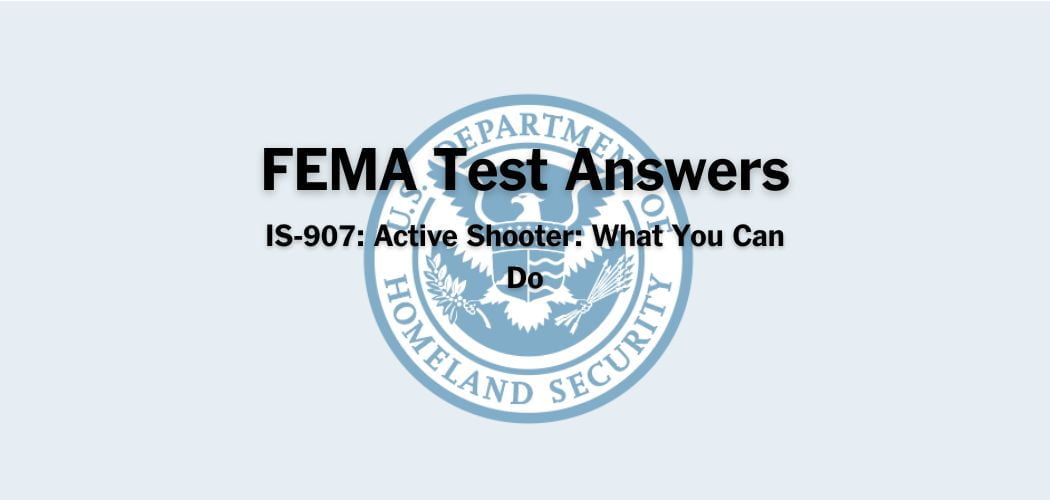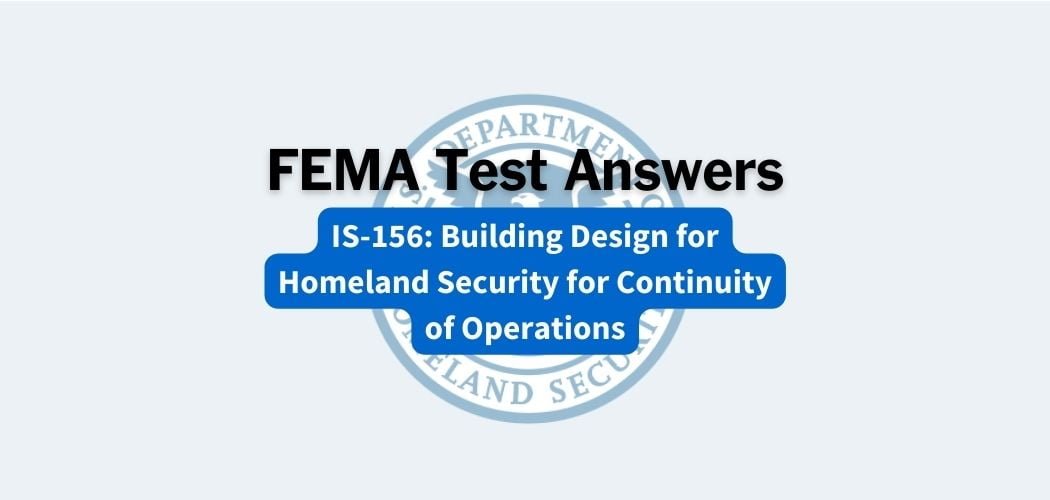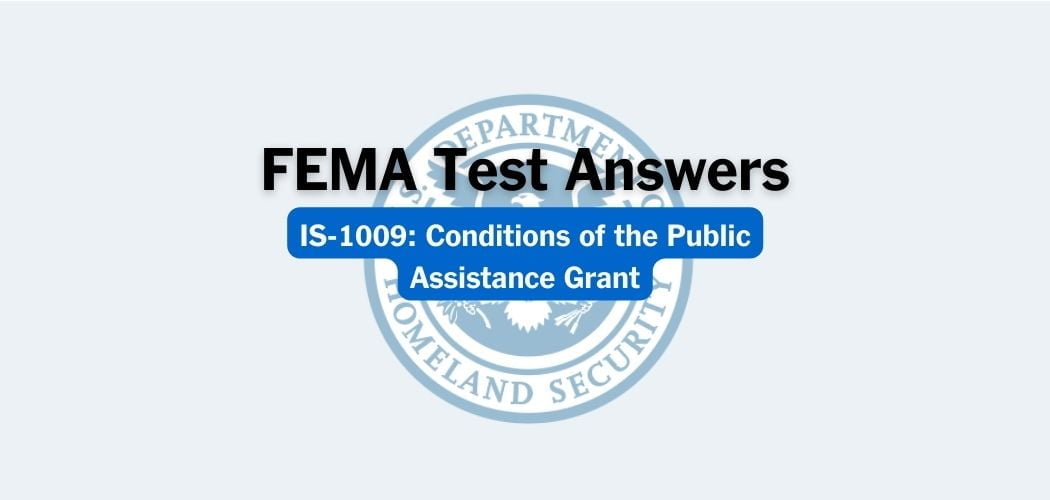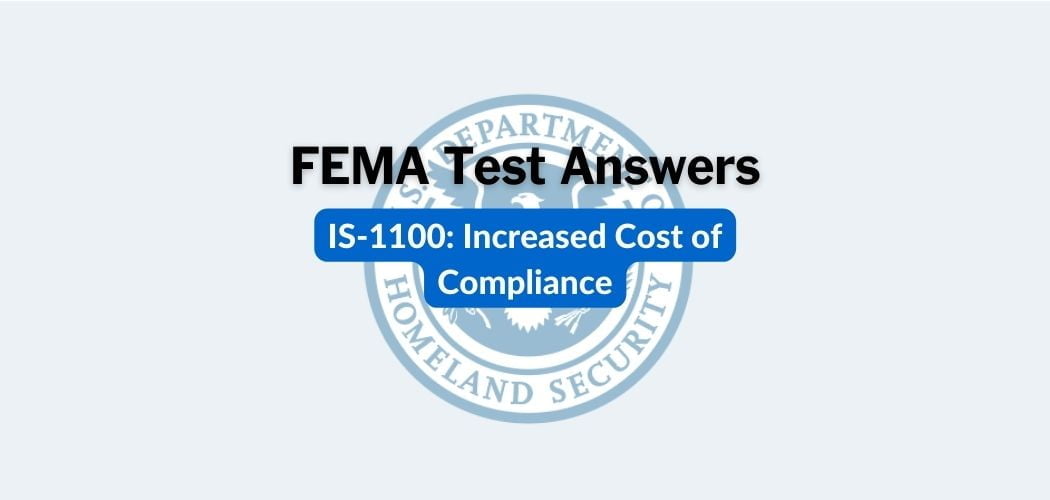Overview: The FEMA IS-551 was published on 10/22/2010 to provide you with the tools and practical knowledge necessary to develop your organization’s devolution plans and procedures.
Primary audience: The IS-551 course is for government continuity managers and planners. Upon completing this course, the participant will be able to identify the conditions under which devolution would be appropriate for your organization.
FEMA IS-551 test answers
Each time this test is loaded, you will receive a unique set of questions and answers. The test questions are scrambled to protect the integrity of the exam.
Question 1. Devolution planning for executive branch departments and agencies is required by:
A. The National Response Framework (NRF)
B. The National Communications Systems (NCS) Directive 3-10
C. Federal Continuity Directive (FCD) 1✅
D. Federal Preparedness Guidance Circular (FPC) 65
Question 2. Activation of the devolution continuity option may be:
A. Active
B. Passive
C. Both active and passive.✅
Question 3. The specific protocol for activating your agency’s devolution plan can be found in:
A. Your agency’s Occupant Emergency Plan (OEP) Annex✅
B. The National Incident Management System (NIMS)
C. Your agency’s devolution plan activation decision matrix
D. The National Response Framework
Question 4. Using the devolution template during devolution planning:
A. Ensures that the agency’s Emergency Relocation Group (ERG) is notified promptly if the devolution plan is activated
B. Promotes careful consideration of all of the devolution elements✅
C. Simplifies the devolution planning process since most agency’s devolution plans are very similar
D. Is required by FCD 1 for federal agencies
Question 5. Devolution cannot be part of continuity.
A. TRUE
B. FALSE✅
Question 6. Devolution can be:
A. Long-term
B. Short-term
C. Both long-term and short-term✅
D. None of the above
Question 7. An active trigger for devolution cannot include a threat.
A. TRUE✅
B. FALSE
Question 8. Sound devolution planning affects an organization’s succession planning because:
A. The devolution site should be located at least 500 miles from the agency’s primary facility and at least one successor must work at that facility
B. All alternate site continuity efforts should be duplicated at the devolution site
C. All agency successors should normally work at the headquarters facility so they will be able to keep abreast of day-to-day business activities in case they need to assume the leadership role without notice
D. At least one agency successor should not regularly work at the headquarters facility✅
Question 9. An active devolution trigger would initiate the devolution plan when:
A. Media reports indicate a catastrophic event has just occurred in close proximity to the agency’s facility
B. The senior agency official directs the devolution team to assume the agency’s responsibilities until directed otherwise
C. The headquarters Emergency Relocation Group is in transit to the alternate operating facility
D. The headquarters facility is suddenly destroyed by an explosion during a workday✅
Question 10. A devolution plan should only be implemented when the long-term organizational capability is not possible.
A. TRUE
B. FALSE✅
Question 11. Only an occurrence of an incident can activate a devolution plan.
A. TRUE
B. FALSE✅
Question 12. Devolution may be a planned temporary transfer of essential functions.
A. TRUE✅
B. FALSE
Question 13. The devolution template _______ section includes personnel, essential records and databases, prepositioned information, telecommunications, information systems support, TT&E, and security.
A. Support Requirements✅
B. Organization and Responsibilities
C. DEVOP Implementation
D. Concept of Operations
Question 14. The individual responsible for activating the devolution plan is:
A. Anyone who has been delegated the authority to activate the devolution plan
B. The person who is responsible for initiating the alert and notification procedures
C. A successor to agency leadership if the primary leader is incapacitated
D. a and c✅
Question 15. The devolution template is a fill-in-the-blank type form.
A. TRUE
B. FALSE✅
Question 16. Devolution includes transferring responsibility to other organization employees and facilities.
A. TRUE✅
B. FALSE
Question 17. The devolution plan should not include possible triggers for the plan to be implemented.
A. TRUE
B. FALSE✅
Question 18. The devolution template ___________ section includes actions required during each phase of activation.
A. Support Requirements
B. Organization and Responsibilities
C. DEVOP Implementation✅
D. Concept of Operations
Question 19. A devolution plan should include a roster that identifies staff at the devolution site.
A. TRUE✅
B. FALSE
Question 20. Devolution does not allow transferring operational responsibility to a different facility site outside the organization.
A. TRUE
B. FALSE✅
Question 21. Devolution is only used in the case of catastrophic events.
A. TRUE
B. FALSE✅
Question 22. A devolution plan lists the resources required to facilitate the performance of essential functions at the devolution site.
A. TRUE✅
B. FALSE
Question 23. Devolution plans should:
A. Include all elements of a viable continuity capability
B. Address notice and no-notice events
C. Address how an organization will identify and transfer its essential functions and/or leadership authorities.
D. All of the above✅
Question 24. Activation of the devolution plan may be required when:
A. The agency’s Continuity Plan has not been tested within the past two years
B. The FBI receives information about a potential threat against the agency
C. The headquarters Emergency Relocation Group is in transit to the alternate operating facility✅
D. Personnel at the devolution site are better trained than the headquarters Emergency Relocation Group (ERG)
Question 25. Devolution does not allow the authority of operational responsibility to be transferred to another organization’s leadership.
A. TRUE✅
B. FALSE



